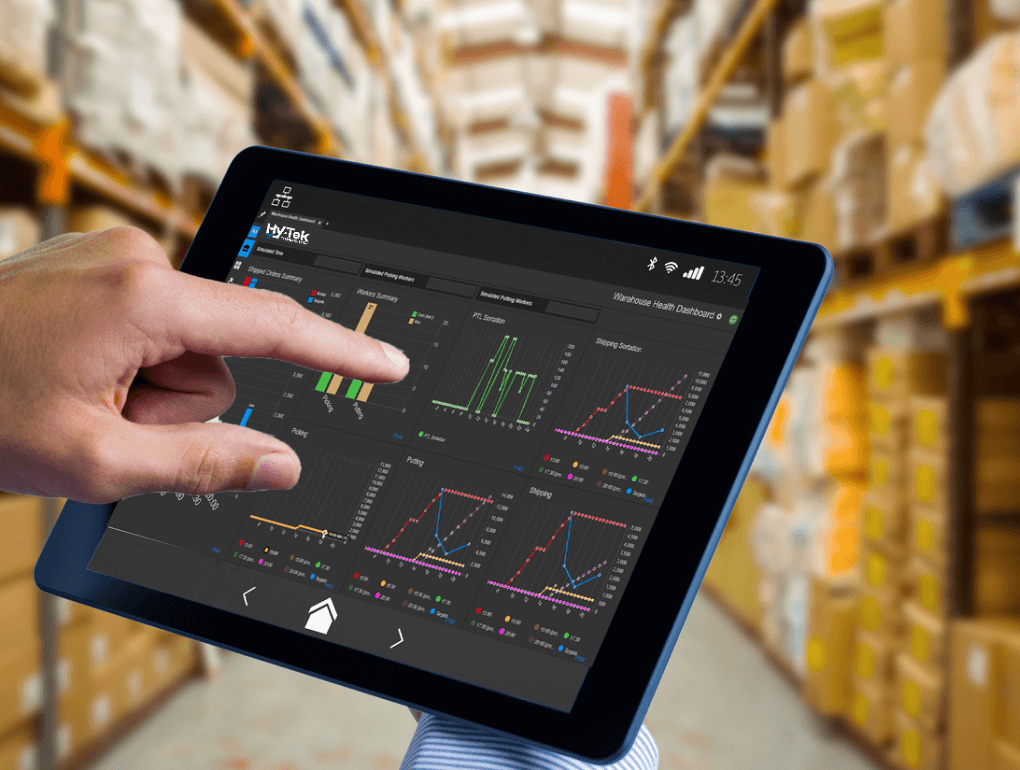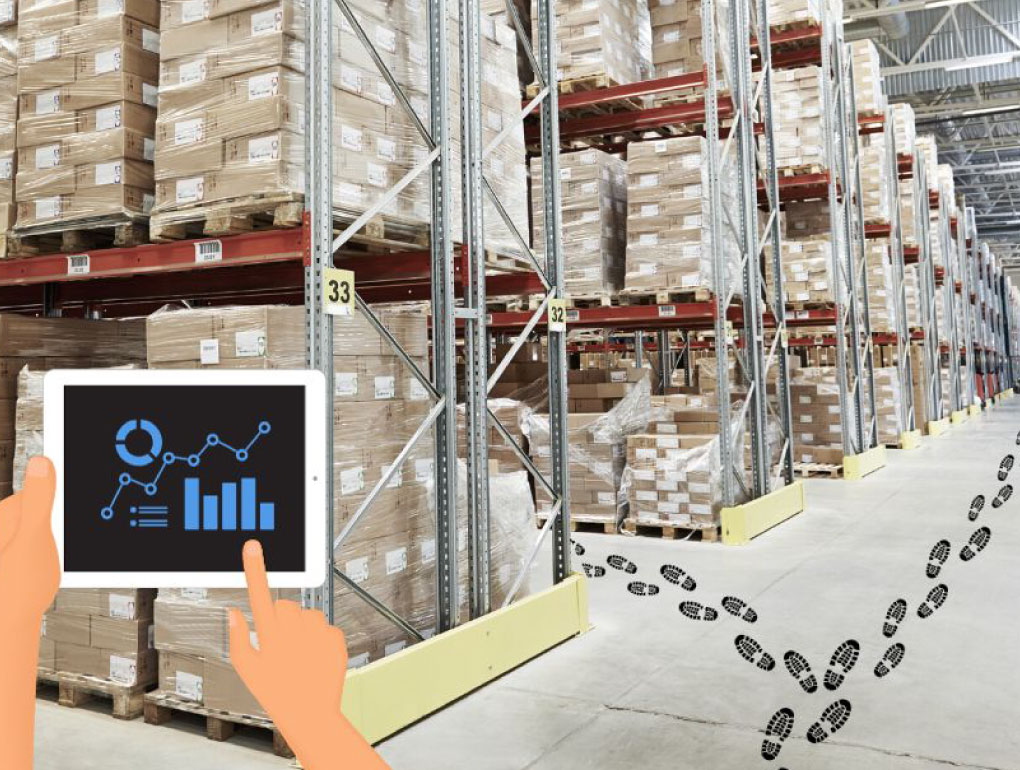The warehouse software industry has come a long way in the last 50 years. In 1967, IBM released System/3, which was the first software designed to manage complex transactions and inventory for aerospace companies. This invention led to other game-changing technologies, such as the UPC barcode, cross-docking systems, and Enterprise Resource Planning (ERP) systems.
Today, warehouse management systems (WMS), warehouse control systems (WCS), and warehouse execution systems (WES) are widely used in supply chains across the globe. However, there is still some debate about which of these three software options is the best. Below is a breakdown of each one.
What is a WMS?
A WMS provides a way to streamline and optimize your workflow from start to finish while providing key visibility into warehouse KPIs.
That all sounds great – but what does it actually do? With real-time updates on your warehouse inventory, you can easily spot mistakes and bottlenecks in your processes. Plus, with the ability to create new tasks and notifications when issues arise, this technology allows you to make data-driven decisions about optimizing the workflow of your warehouse operations.
Historically, WMS was managed on-premise by either the company that created the WMS platform or an in-house IT team. However, nowadays, WMS can be managed online over the Cloud – with the simple ability to enable new applications/features they would like configured for their supply chain processes. These modules can be configured and added to the WMS if an operation would like to add new advanced picking and shipping processes, order fulfillment activities, inventory management processes or receiving capabilities.
Once all the processes are configured to the system, data is collected on the server and becomes available to those with permission. To help clients understand how the business is performing, reports can be generated with metrics, graphs, or other visuals.
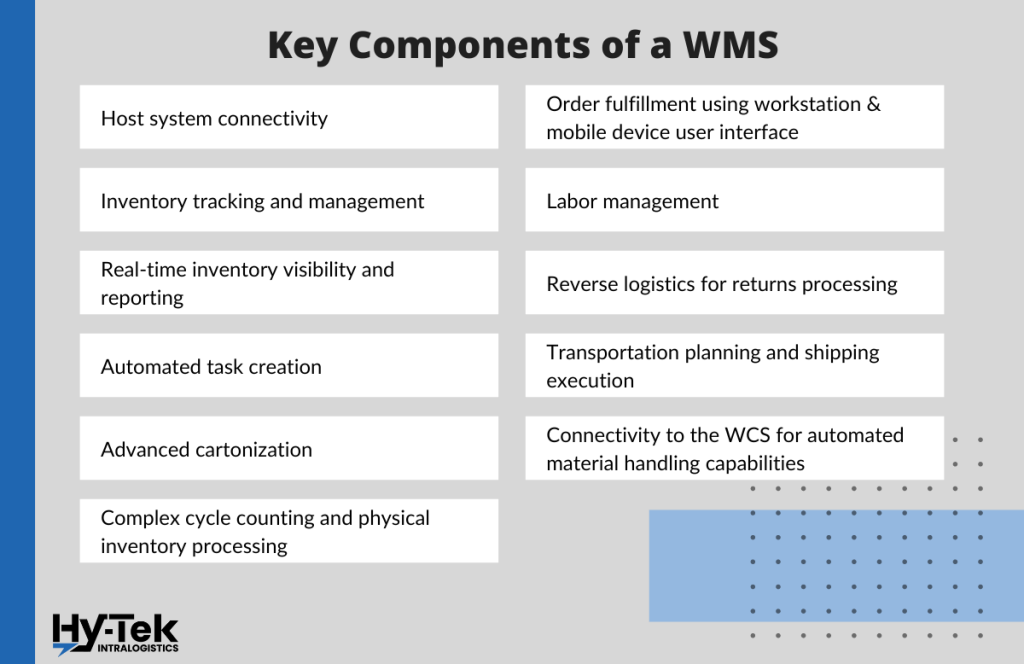
Key Components of a WMS
- Host system connectivity
- Inventory tracking and management
- Real-time inventory visibility and reporting
- Automated task creation
- Advanced cartonization
- Complex cycle counting and physical inventory processing
- Order fulfillment using workstation and mobile device user interface
- Labor management
- Reverse logistics for returns processing
- Transportation planning and shipping execution
- Connectivity to the WCS to provide automated material handling capabilities (automatic sortation, print and apply, pick/put to light, voice pick, goods-to-person systems)
Featured Resource
[Free Download] WMS Questionnaire
Questions to guide you in your WMS selection process.

No strings attached. Free download.
What is a WCS?
The WCS is mainly focused on completing the work of automated equipment. It takes orders from the WMS and oversees the movements of all items throughout the warehouse, allowing for a seamless flow from receiving to shipping. In addition, it also provides up-to-date instructions and directives to equipment controllers and operators so that products are accurately routed and dealt with quickly.
The WCS sits below the WMS and provides real-time execution control of automated equipment such as conveyors, sortation systems, automated storage and retrieval systems (AS/RS) cranes, robots, and automated guided vehicles (AGVs).
Advanced WCS are versatile and can be integrated with various manufacturers’ equipment and quickly switch between technologies. When it comes to automating your warehouse or distribution center, the WCS should not limit what technology you use.
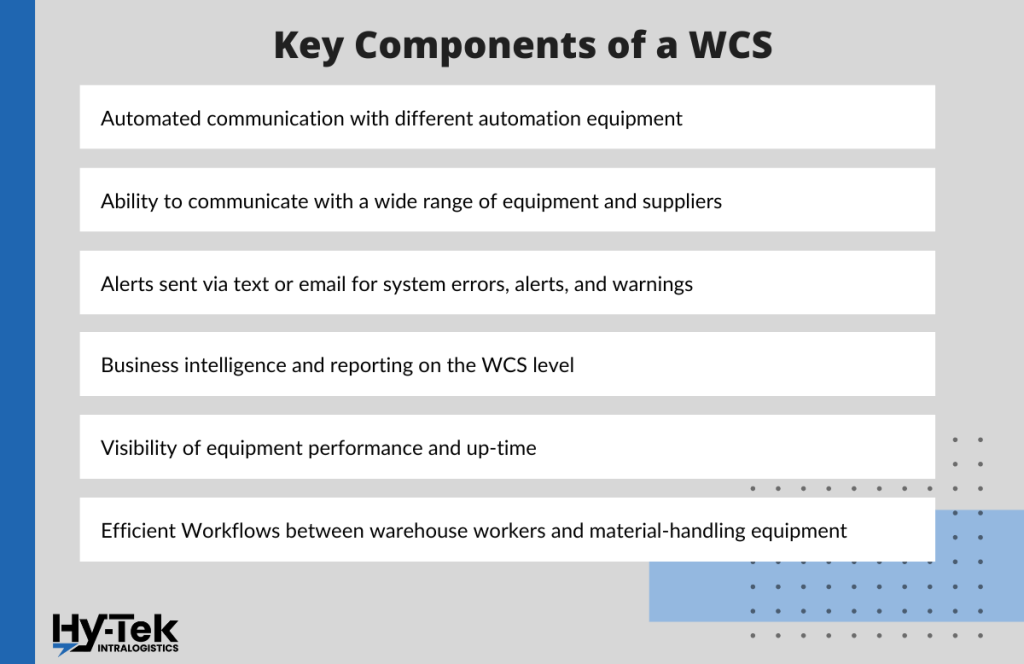
Key Components of a WCS
- Automated communication with different automation equipment
- Ability to communicate with a wide range of equipment and suppliers
- Alerts sent via text or email for system errors, alerts, and warnings
- Business intelligence and reporting on the WCS level, including statistical information on automation equipment
- Visibility of equipment performance and up-time
- Efficient Workflows between warehouse workers and material-handling equipment
What is a WES?
The WES is the most complex of the three and is often one part of the overall systems used to manage the entire warehouse/DC operation. Therefore, the WES has strong integration capabilities to enable communication with other systems – both internal and external.
This capability allows data to flow in real time between systems, thus allowing rapid processing of data across tasks and functions.
The WES is also generally highly parameterized to adapt to ever-changing requirements. This flexibility allows operations managers to make real-time adjustments as workflows change, seasonality affects take effect, and resource constraints, including labor change.
Lastly, WES systems incorporate advanced algorithms to take the endless feed of data (order data, conveying data, Goods-to-Person system data, etc.) and analyze it to optimize and balance work throughout the warehouse/DC.
By optimizing its procedures, WES has revolutionized labor utilization and throughput rates. This means that resources are used to their fullest potential – something necessary in the e-commerce world where customer demands constantly evolve. Because of this optimized process, WES is now even more desirable for distribution centers as they strive to meet customer needs better.
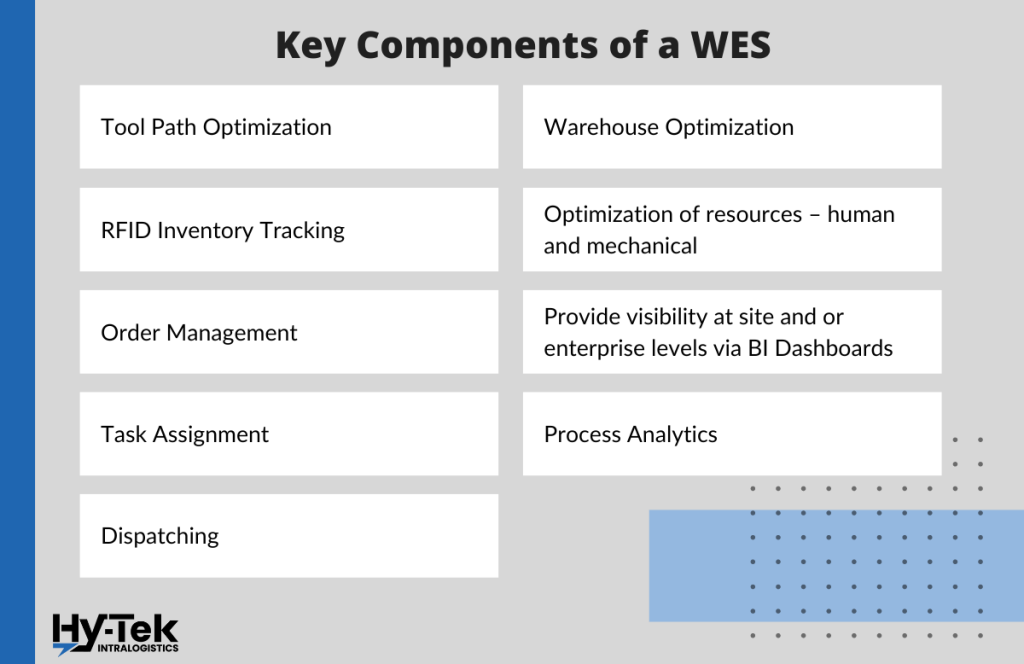
Key components of a WES
- Tool Path Optimization: Advanced algorithms that optimize the material handling paths to reduce the time and cost of operations.
- RFID Inventory Tracking: Automatically tracking inventory levels by scanning barcodes or reading RFID tags.
- Order Management: Managing orders, picking, packing, and shipping tasks.
- Task Assignment: Assigning warehouse tasks to pickers or robots to maximize worker productivity and reduce errors.
- Dispatching: Ensuring orders are dispatched on time and accurately according to customer requirements.
- Warehouse Optimization: Optimizing warehouse layout for faster throughput and higher storage density.
- Optimization of resources – human and mechanical
- Provide visibility at site and or enterprise levels via BI Dashboards
- Process Analytics: Gathering data from various sources and providing analytics for measuring warehouse performance, identifying bottlenecks, and improving customer satisfaction levels.

Choosing the Appropriate Software for your Operation
When selecting warehouse software, it’s crucial to consider the complexity of your operation and the integration of various software solutions.
For small, manual warehouses with limited automation and a few facilities, a WMS may be sufficient.
However, larger organizations with multiple warehouses, e-commerce fulfillment operations, and third-party logistics providers may require a WMS and a WCS or WES.
Warehousing systems like WMS, WCS, and WES are often siloed, leading to inefficiencies and a lack of real-time data transferability. Multiple software solutions from different vendors may be required to meet the needs of these larger organizations, but this can lead to a lengthy deployment process and a higher rate of errors and system failures. Integration of first and third-party applications can also be challenging, and data flow may not be seamless.
To avoid these issues, consider using a single warehouse software provider and create a list of desired functionalities based on your automation level, current challenges, and other warehouse needs to evaluate and determine the best fit for your operation easily.
FAQ
What are WMS, WES, and WCS?
A WMS helps companies manage their operations throughout the entire fulfillment process, the WES manages and optimizes the flow of orders and activities within a warehouse, and the WCS is dedicated to automating specific warehouse tasks on the floor. All three can be used in combination to help warehouses run more efficiently and effectively.
What would be the advantage of using WCS over WMS?
The WCS is designed to automate warehouse tasks and can be more flexible than a WMS because it is focused on controlling the execution of tasks rather than managing overall warehouse operations.

